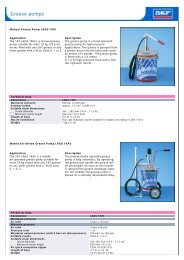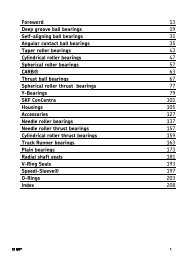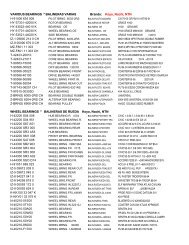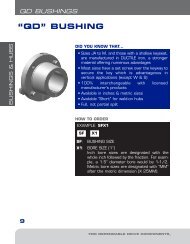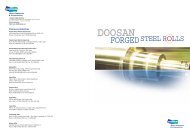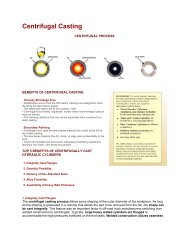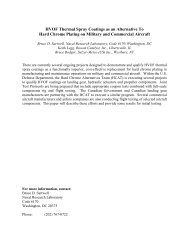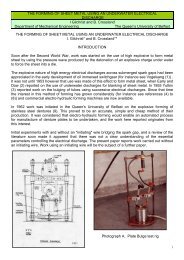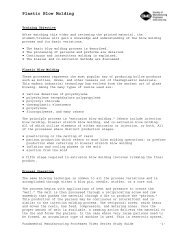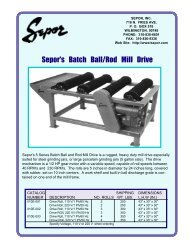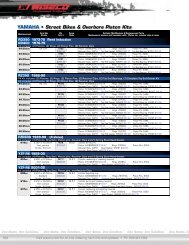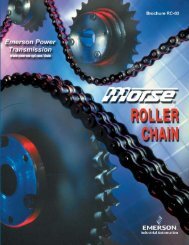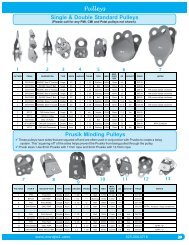Worm Gear Operated Trunnion Mounted Ball Valve Manual ...
Worm Gear Operated Trunnion Mounted Ball Valve Manual ...
Worm Gear Operated Trunnion Mounted Ball Valve Manual ...
Create successful ePaper yourself
Turn your PDF publications into a flip-book with our unique Google optimized e-Paper software.
<strong>Worm</strong> <strong>Gear</strong> <strong>Operated</strong> <strong>Trunnion</strong> <strong>Mounted</strong> <strong>Ball</strong> <strong>Valve</strong><br />
<strong>Manual</strong> Instruction<br />
Model-No.: Q347F-900LB<br />
Size: 2”, 4”, 6”<br />
Wenzhou Topnotch Machine Co.,Ltd.
1.3 Construction features<br />
The product is trunnion mounted manual operated ball valve; the main components are main body, left and<br />
right body, ball, seat, stem and worm gear.<br />
1.3.1 The seat is double sealing, each seat can function separately to cut off the medium of inlet and outlet to<br />
achieve double cut, meanwhile, when the fluid medium in the valve gasified as the temperature is rising which<br />
also causes the rapid rising in pressure, The medium in valve body can push the seat by its self function to<br />
decrease the pressure and ensure the safety of the valve. (See chart 17)<br />
1.3.2 Blow-out proof stem structure: An opening ring is placed at the middle of the stem to prevent stem blow<br />
out which may caused by the rapid rising of pressure (See chart 41)<br />
1.3.3 Anti static structure: release the static to the ground to ensure the safety of the valve.<br />
1.3.4 Drain structure: Draining device is designed at the bottom of the main body, and venting device is also<br />
designed at the top of the main body. (See chart 5)<br />
1.3.5 Packing gland no leaking design: the sealing gasket is placed in between the main body and the left and<br />
right body, stainless steel graphite spiral wounded gasket which ensures the sealing of the packing gland even<br />
if the O ring is failed to function. (See chart 26)<br />
3
3. Main Construction material<br />
Left, right body<br />
and main body<br />
WCB Seat PTFE / POM<br />
<strong>Ball</strong> A351 CF8 Bolts A193 B7<br />
Stem A276 410 Nuts A194 2H<br />
Packing Graphite Spring 17-7Ph<br />
Gasket 304/Graphite <strong>Worm</strong> <strong>Gear</strong> Manufacture Standard<br />
4. Safekeeping, Installation, Usage, Check-up<br />
4.1 Safekeeping<br />
a. The valve should be stored in dry, ventilated room, placed in order, especially lightly lay the stem.<br />
b. During keeping and storing, the valve should be closed and make the double-side flanges close down.<br />
c. During storing, we should use easily cleaning out antirust for valve surface.<br />
d. If the valve is stored for long-term (over 1 year), it should be checked before installation, wash the dirt and paint antirust. It is<br />
recommended to retest in accordance with relevant code(API 6D) before installation<br />
5
5. Installation and operation<br />
1. The valve should be installed in the place which is easy to maintain, inspect and operate.<br />
2. The marks on the valve should be checked before its installation to ensure the valve is applicable<br />
3. The impurities and damages caused during the transportation should be cleaned and repaired before its installation.<br />
4. The valve should be with the same direction as indicated in the worm gear when the valve is in open position.<br />
5. The valve should be kept with two ends covered; valves should not be stacked when it is in full opening position and should<br />
be kept in room with adequate vitalization.<br />
6. The valve should be regularly checked during the preserve and operating, the failure should be solved when it is found.<br />
7. The valve internal should be kept clean; cleaning should be taken when it is needed.<br />
8. The valve must be operated as full opening or full close, can not be operated as adjusting valve.<br />
9. The valve is open and close by the control of wheel; it should not be operated by lever or other kind of power.<br />
10. If there is sediment in the internal or unusual pressure rising is found when the valve is closing, the sediment or gas (liquid)<br />
can be drained out by the draining device in the main body.<br />
11. Try to avoid the stress that produced by its accessories and the environment.<br />
12. Do not use the valve for high corrosive or large granule and unsteady medium<br />
8
6. Possible failure and solutions.<br />
Performance Failure Causes Solutions<br />
The stem can not be turned<br />
Leakage in between ball and gasket<br />
or gasket and valve body<br />
Leakage in back seat<br />
Leakage in packing<br />
1. The back seat is assembled too tight.<br />
2. There are damages or impurities in between the<br />
stem and its accessories.<br />
1. Without adequate tightening<br />
2. Damages or impurities on the sealing face<br />
3. The sealing face is deformed or failed to function.<br />
1. Packing is not properly tighten<br />
2. The gasket is working over time and defected.<br />
1. Packing is not properly tighten<br />
2. the gasket is working over time and defected<br />
9<br />
1. loose the nut and re-adjust<br />
2. De-assembly the valve and repair.<br />
3. De-assembly the valve and clean the impurities.<br />
1. Tight the valve with adequate tightening<br />
2. Repair and burnish the sealing face and clean the<br />
impurities<br />
3. Replace the gasket<br />
1. Readjust bolts and nuts<br />
2. replace the gasket<br />
1. readjust bolts and nuts<br />
2. replace the packing<br />
Leakage in packing gland bolts of packing gland is loosing Tightening the bolts



